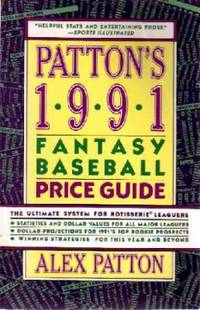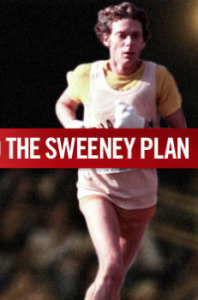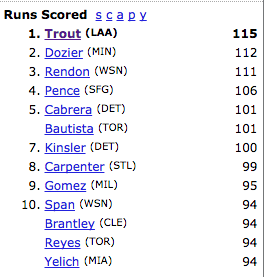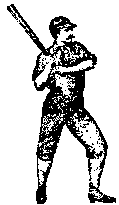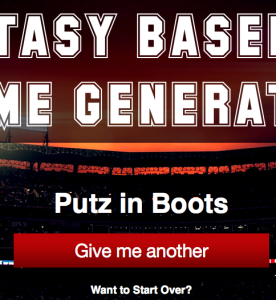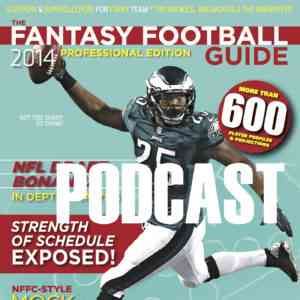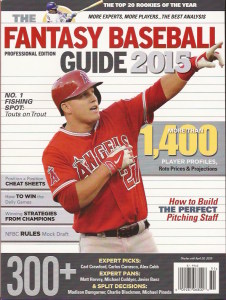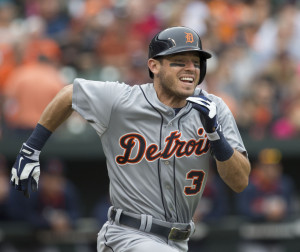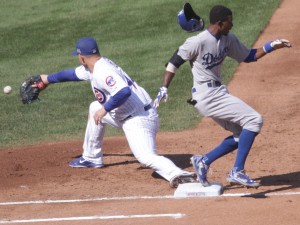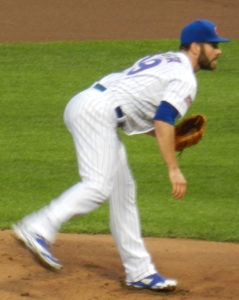I received the following in email earlier today. It is a computer generated analysis of the Mock I did for Baseball Prospectus earlier this week. I can’t contest the wisdom of the machine, which will someday replace the fantasy experts at CBSsports, at least. I apparently have a terrible team. But its writing is dismal.
I do hope they send out a story after the season, showing how these teams actually did, and how good or bad their analysis actually was.
Draft Recap
By CBSsports Interactive

The final victory is still up for grabs, but Brian Walton have taken a good first step, winding up with the top ranked draft. Coach Walton’s squad, led by Jose Altuve, are projected to wind up with 120 category points. That’s 55 more points than you are projected to come up with. You will have all year to prove us wrong, but for now, you are slated to finish in last place.
Bret Sayre are expected to be better than that overall, and much better on the outfielders front, where they have the best group in the league. Coach Sayre can trot out Andrew McCutchen, Michael Brantley, and George Springer into the starting lineup. Steve, meanwhile, are the worst in the league in that area, with Allen Craig, Melvin Upton, and Drew Stubbs gracing the starting lineup. Coach Moyer won’t be able to blame outside factors for that soft spot in the roster either, given that they had the 2nd easiest path through the draft.
Speaking of draft difficulty, you had it pretty rough, as you ended up with less value available to you than all but two other teams. You had to watch as good value picks like David Price, J.D. Martinez, and Dallas Keuchel were snatched right before it was your turn.
Turning to individual picks, we tapped Steve as having made the best pickup with Cliff Lee in the 169th slot. He was projected to be off the board a full 85 picks earlier. On the other hand, Fake Teams made the worst move of the draft. Coach Guilfoyle selected Starlin Castro with the 57th pick, which we pegged as a serious reach.
Your best pickup of the draft was Corey Kluber, who was expected to have been selected in the 25th slot, but who you got with pick #39. However, you mixed in some duds as well, the worst of whom was Daniel Murphy, taken 74 spots ahead of what his average draft position suggests.
|
Teams |
|
|
Team |
Projected Category Points |
|
Brian Walton |
120 |
|
Bret Sayre |
95 |
|
Lawr Michaels |
94 |
|
Lamentation of Their Women |
84 |
|
Gardner |
82 |
|
Team McLeod |
79 |
|
Steve |
77 |
|
Matthew Pouliot |
75 |
|
Tim Heaney |
75 |
|
Mike Gianella |
74 |
|
Walter Kuberski |
72 |
|
Ryan Bloomfield |
71 |
|
Fake Teams |
69 |
|
Asches to Asches, Cust to Cust |
68 |
|
Rotoman’s Vertigos |
65 |
|
Players Drafted |
|||
|
Player |
Pick Number |
Average Draft Position |
Pick Value Rank |
|
9 |
7 |
99 |
|
|
22 |
37 |
328 |
|
|
39 |
25 |
26 |
|
|
52 |
64 |
307 |
|
|
69 |
114 |
340 |
|
|
82 |
156 |
343 |
|
|
99 |
115 |
302 |
|
|
112 |
104 |
79 |
|
|
129 |
185 |
333 |
|
|
142 |
126 |
63 |
|
|
159 |
183 |
292 |
|
|
172 |
201 |
291 |
|
|
189 |
228 |
286 |
|
|
202 |
206 |
218 |
|
|
219 |
203 |
96 |
|
|
232 |
240 |
212 |
|
|
249 |
307 |
243 |
|
|
262 |
215 |
75 |
|
|
279 |
293 |
188 |
|
|
292 |
279 |
148 |
|
|
309 |
287 |
146 |
|
|
322 |
289 |
137 |
|
|
339 |
346 |
152 |
|

